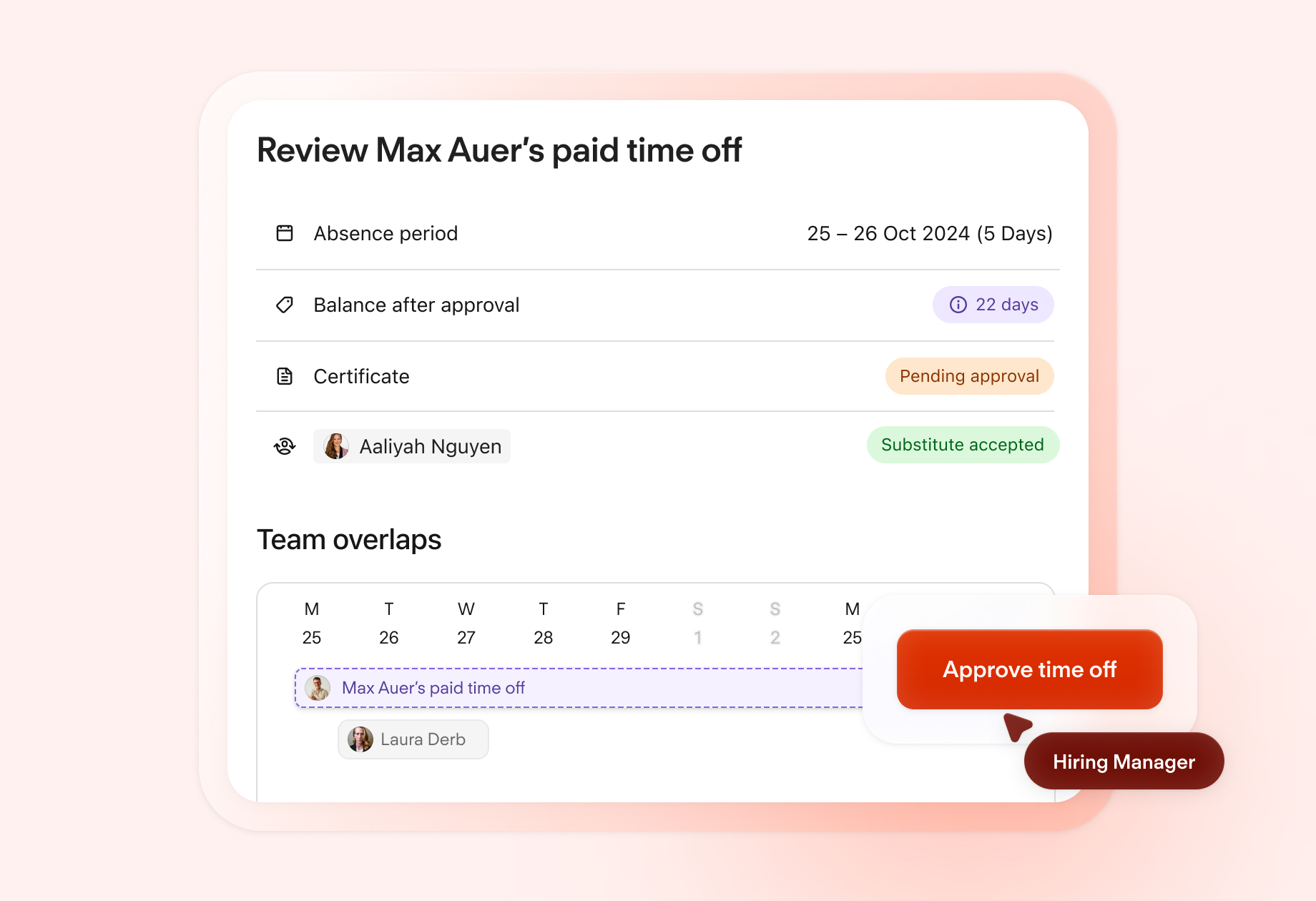4 Employee Motivation Theories You Need To Try

When it comes to thinking about motivation theories, it helps to think about one thing: What keeps employees motivated, and how can you, as an HR leader, facilitate that motivation to its highest degree? In this article, we'll detail three theories to keep employee motivation high.
What Are Motivation Theories?
Motivation theories are hypotheses backed by evidence. In a business context, motivation theories relate specifically to the factors (both internal and external) that make people interested in doing their job and motivated enough to do it well.
After all, human behaviour is beautiful and complex. We all behave and respond to circumstances differently – and are more or less motivated at different times. To explain human motivation, it’s helpful to look at theories surrounding it.
How Can You Use Motivation Theories To Boost Employee Productivity?
As an HR leader or a manager, it’s important to understand motivation theories because they can unlock the key to employee behaviour and higher employee performance.
Personal experience tells us that motivated employees:
Work harder
Deliver more consistent and better results
Are less likely to leave organizations
Are generally a more positive influence on their peers
Research has also shown that improved employee engagement is linked to higher performance.
Other studies reveal that when employees are more engaged, business metrics like customer satisfaction, productivity, innovation, efficiency, staff retention, and even health and safety are positively affected, too.
Drive employee performance to new heights with Personio’s HR software.
Can Motivation Theories Benefit Managers and HR Teams?
Can motivation theories help managers and HR leaders understand how to inspire their people, or improve their performance? The short answer: yes!
The CIPD conducted an extensive review of the evidence for, and against, various popular motivation theories which makes for interesting reading.
In essence, their research showed that some popular motivation theories aren’t supported by the research. But that doesn’t make them any less appealing, or valuable if they are applied in a way that promotes employee motivation, and encourages positive behaviour.
How Are Employee Motivation And Corporate Culture Linked?
When employees are part of a culture that values the importance of psychological safety, it has a positive impact on employee satisfaction, motivation, and productivity – which lead directly to business success.
Conversely, if corporate culture is antagonistic, cut-throat, or downright toxic, it violates people’s needs for safety including the need for emotional security, financial security, order, predictability, or social stability.
As a result, behaviour becomes self-serving. Employees might still be motivated to achieve, but this motivation comes at the expense of authenticity, and potentially even both happiness, and mental health at work.
Discover Personio: Drive Employee Performance Higher
Scheduling reviews, collecting feedback, setting goals, and more. Personio’s HR software can help ensure employees aren’t just meeting their goals, but giving them the time to exceed them.
How It WorksWhat Are The Most Popular Motivation Theories?
This next section summarizes four of the more popular motivation theories of the day:
1. Herzberg’s Motivation-Hygiene (Two-Factor) Theory
Are people motivated by external (extrinsic) factors or internal (intrinsic) ones? Actually, both come into play! Let’s dive into Herzberg’s motivation-hygiene theory (also known as his two-factor theory).
What is the two-factor theory? In a nutshell, Herzberg hypothesized that individuals were motivated or demotivated by two categories of variables.
His theory was that intrinsic (motivational) factors could increase satisfaction, and extrinsic (hygiene) factors could decrease it if they were not managed (or were poorly managed).
Intrinsic Factors | Extrinsic Factors |
|---|---|
Achievement | Company Policies |
Recognition | Working Conditions |
Responsibility | Supervisor Support |
Advancement | Salary |
Nature of Work | Interpersonal Relationships |
Two-Factor Theory Example
Today, most managers work on the assumption that motivational factors help employees do better work and want to do better work. And, mostly, they’re proven right.
But when the conditions under which people work are poor – when they’re not supported, aren’t paid enough, aren’t acknowledged, or have to adhere to company policies that don’t make sense – their motivation decreases.
2. McGregor’s Theory X and Theory Y
Another commonly-used motivation theory is McGregor’s Theory X and Theory Y approach. First explained his book, The Human Side of Enterprise, this is also considered to be an approach to management styles, rather than a motivation theory – but his discoveries still apply.
McGregor’s Theory X is used by managers who assume workers are inherently lazy or unmotivated. Employees who show this kind of behaviour need an authoritarian approach that often involves micromanagement to ensure things get done. HBR says the assumption is they must be ”coerced, controlled, and directed toward organizational goals.”
Theory Y is a participative approach. People who show this attitude are intrinsically motivated. People who operate with a Theory Y attitude seek responsibility, want to be self-directing, and get involved in solving problems.
Theory X and Theory Y Example
In reality, the nature of the organization determines whether managers will use a Theory X or Theory Y approach. In highly regulated industries, or where there are genuine daily risk factors, or the need for very precise, and accurate work, it might be more appropriate to apply a bit of micromanagement (more akin to a Theory X style).
But the world has moved forward since this theory was first published in 1960. Even employees in workplaces like this want to solve problems. Perhaps the best approach lies towards the Y side of the spectrum (while adjusting for context).
Which management style is right for your workforce? Find out here.
3. Social Exchange Theory
This theory is based on the concept of reciprocity. When employees are treated as they would like to be treated they build a good feeling towards the company.
Going back to Gouldner in 1960, social exchange theory explains that this is part of a human need for group connection and social exchange. Wietrak et al summarize this in the following article from the CIPD.
Social Exchange Theory Example
For example, an employee may be motivated to help a colleague, not only because this meets the social norm of reciprocity, but also because they feel part of the organizational community, and helping a colleague meets the organization’s norms and values.
4. Deci & Ryan’s Self-Determination Theory
If we assume that modern workers are intrinsically motivated, and use a Theory Y approach, the next logical step is to move on to Edward Deci and Richard Ryan’s self-determination theory.
Their book, Intrinsic Motivation and Self-determination in Human Behavior assumes that all humans have three basic needs. When these needs are met, we do well.
These needs include:
Autonomy – Feeling like we have control of our behaviour
Competence – The need to develop expertise
Relatedness – The need to connect with others and belong
The evolution of this theory balances both intrinsic motivation, and external incentives which, together, can improve employee performance.
You can boost employee performance through recognition, too. Here’s how.
Self-Determination Theory Example
Employees’ behaviour is largely determined by their own attitude to work. To be self-motivated employees need to feel like they can do meaningful work that allows them to be part of something, and become better at what they do.
This example of an employee building a wall might help explain why self-determination theory is so valid (the excerpt below is summarized by Jean Storlie):
A man came upon a construction site where three people were working. He asked the first, "What are you doing?” and the man replied: “I am laying bricks.” He asked the second, “What are you doing?” and the man replied: “I am building a wall.” As he approached the third, he heard him humming a tune as he worked, and asked, “What are you doing?” The man stood, looked up at the sky, and smiled, “I am building a cathedral!”
How Should You Interpret Your KPIs?
While there are many different motivation theories, theories are most valuable – in an HR context, or life – when they’re applied to real life.
The following tools are supported by a large number of high-quality research studies. HR leaders who leverage these key tools to improve employee motivation are more likely to see them bear fruit:
1. Setting goals
Having goals that are Specific, Measurable, Achievable, Realistic, and Time-bound (SMART), helps employees focus. This is supported by research by Locke, and Latham (2002), Klein et al (1999), and Harkin et al (2016).
2. Gaining recognition
We all appreciate being appreciated. Organizations can show their gratitude for a job well done in a large number of ways, for example: through compliments, gratitude, kind words, thankful emails, public awards, or office-wide recognition of achievements.
3. Doing meaningful work
In alignment with self-determination theory (that we described earlier) – when employees can vary their work, finding meaning in it, and do it independently this makes them see their work as more meaningful which then results in increased work motivation, performance, and job satisfaction.
4. Getting help or support from managers
When a manager helps employees, or recognizes them for doing good work, that is an example of social exchange theory at work. This encourages reciprocation, helps build teams, and improves motivation. This aligns with social exchange theory.
5. Being psychologically safe
Employees who feel psychologically safe at work are more likely to look for, and share, information, ask critical questions, make recommendations, and suggestions, and take initiative.
6. Feeling like employers are fair
Employees want to be treated fairly. It doesn’t just reduce uncertainty, and the fear of being exploited, it also helps them feel like they have a positive social worth, according to Kanfer (2017). In alignment with social exchange theory, and self-regulation theory, Colquitt et al (2001) found that perceived fairness has a strong impact on various work-related outcomes.
Turning Motivation Theories Into Reality
Great HR leaders know, intuitively, that treating people right, fairly, and with consideration is more likely to get great value out of them. That said, it’s not always easy for HR leaders to find the time or create the frameworks that help employees thrive.
Personio helps automate your day-to-day HR tasks, so that the unsung heroes of human happiness at work can do what they do best: Create the best possible workplaces they can to help employees, and their organizations, thrive.

